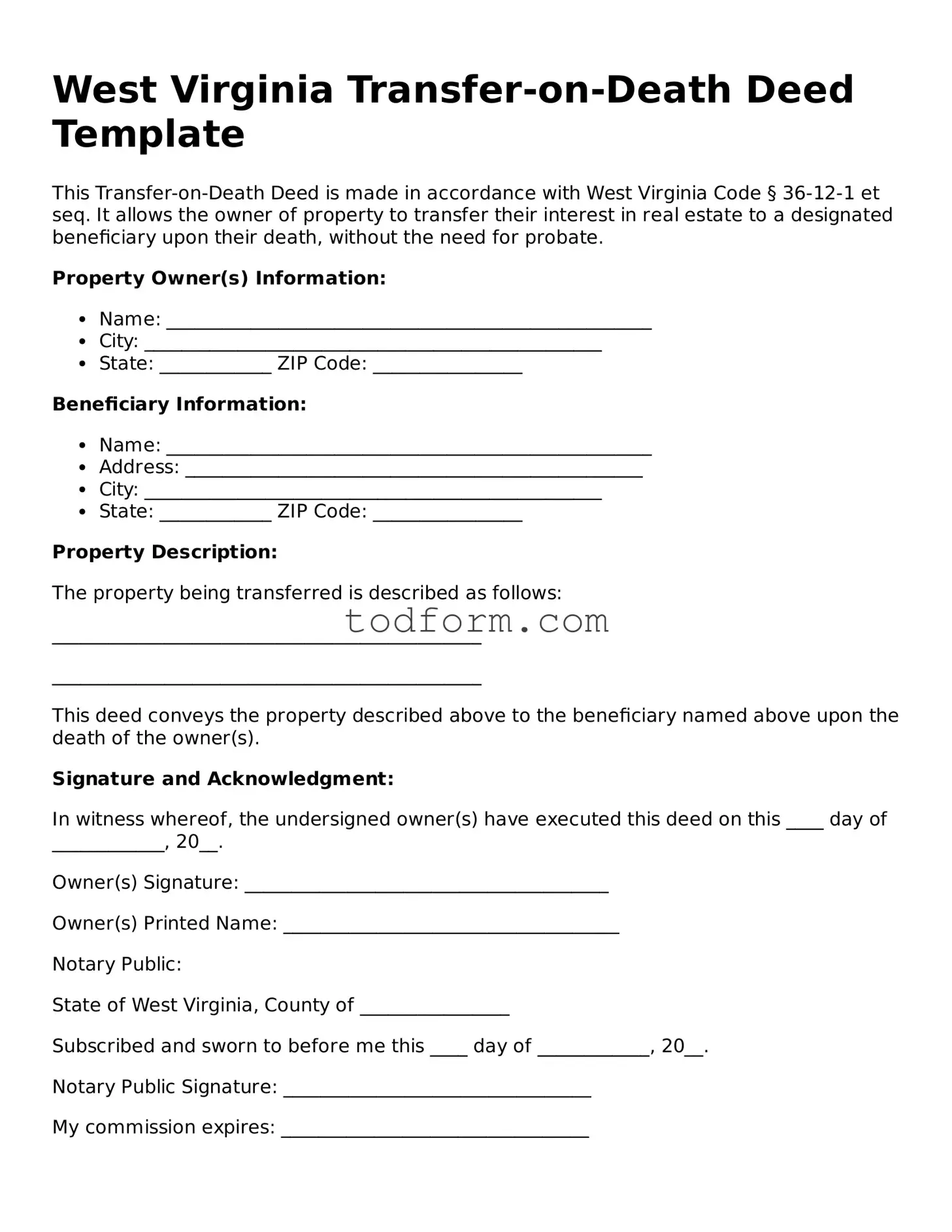West Virginia Transfer-on-Death Deed Template
This Transfer-on-Death Deed is made in accordance with West Virginia Code § 36-12-1 et seq. It allows the owner of property to transfer their interest in real estate to a designated beneficiary upon their death, without the need for probate.
Property Owner(s) Information:
- Name: ____________________________________________________
- City: _________________________________________________
- State: ____________ ZIP Code: ________________
Beneficiary Information:
- Name: ____________________________________________________
- Address: _________________________________________________
- City: _________________________________________________
- State: ____________ ZIP Code: ________________
Property Description:
The property being transferred is described as follows:
______________________________________________
______________________________________________
This deed conveys the property described above to the beneficiary named above upon the death of the owner(s).
Signature and Acknowledgment:
In witness whereof, the undersigned owner(s) have executed this deed on this ____ day of ____________, 20__.
Owner(s) Signature: _______________________________________
Owner(s) Printed Name: ____________________________________
Notary Public:
State of West Virginia, County of ________________
Subscribed and sworn to before me this ____ day of ____________, 20__.
Notary Public Signature: _________________________________
My commission expires: _________________________________
